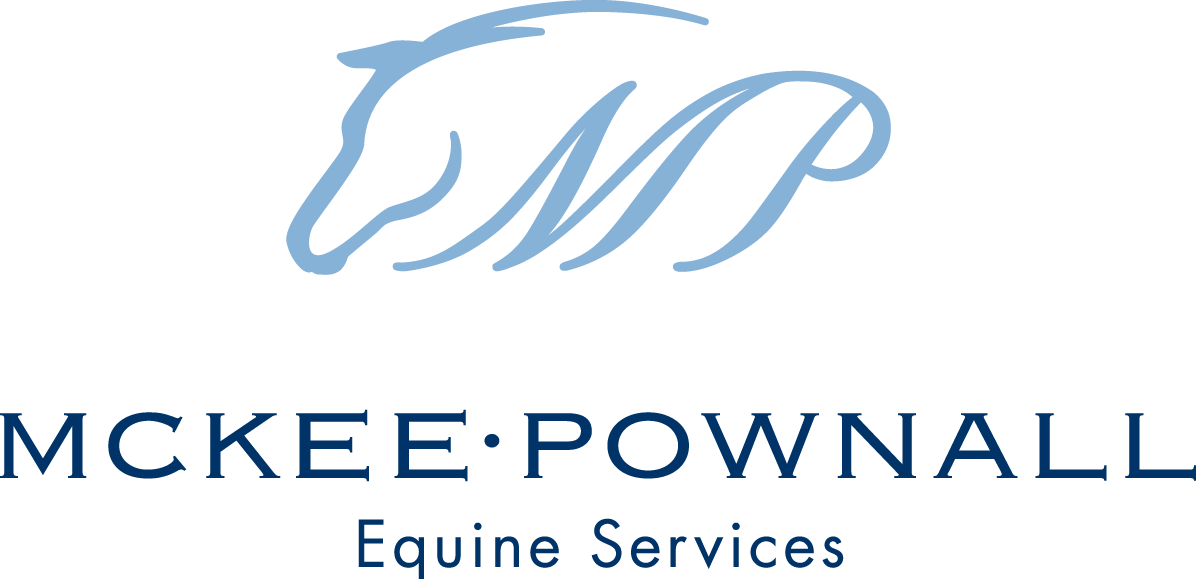
Equine Lameness
McKee-Pownall Equine Services offers cutting edge technology and quality service in the diagnosis and treatment of equine lameness.
You know your horse better than anyone and you know that they aren’t quite right.
Where do you go from there?
Let’s Take A Look
The Exam
The Exam
When we see your horse for a lameness examination we want to understand the whole horse. Even if we are looking for a lameness associated with one limb we want to investigate the other limbs and the body to see if there are reasons in other parts of your horse that may be contributing to the lameness.
The first part of the exam is getting a history. Our vets will ask numerous questions to give us clues as we begin our investigation. This is followed by a physical examination of the feet, limbs and body. While we have outstanding imaging equipment our fingers can tell us a lot as we palpate all over your horse as we look for areas of heat, swelling and pain.
We then follow this up by looking at your horse in motion. We look at your horse walking and trotting in a straight line to see if there are obvious signs of lameness, or irregularities in how their feet land. This is followed by lunging your horse in both directions at the walk, trot and canter on both hard and soft ground. Not only are we looking for a lameness, but we are also looking for any irregularities and stiffness in their stride or body, and how they carry their head. We will look at your horse being ridden when we want to see if a particular lameness is seen only under saddle.
By the time we finish taking a history, perform a physical exam and see your horse in motion we are getting an idea of the lameness and are ready to move on to flexing the limbs and often diagnostic nerve blocks to help further guide us in our lameness examination.
Flexions And Blocking
It is easy to assume we know where a lameness is located after finishing the first part of our lameness exam, but until we do further tests, we are just guessing. Making a diagnosis and treatment plan without further tests is often not in the best interest of you or your horse. When it comes to making a plan to treat your horse we risk treating the wrong area with the wrong protocol leading to further discomfort for your horse, wasted time and unnecessary expenses. Unless the horse is severely lame we will investigate further by performing flexion examinations and diagnostic nerve blocks. In the case of a severe lameness we will skip these further diagnostic tests since these could aggravate the lameness even more.
Flexion exams focuses minor pressure on specific regions on a leg. It can help us identify if a lameness is in the carpus or in the fetlock of below in front, and the stifle, hock or fetlock and below in the hind limbs. The effect on a horse is very similar to us kneeling on the floor. Those of us with knee pain will be a bit creaky in one knee or both when we get up to stand.
Flexions help us isolate a lameness to a region and diagnostic nerve blocks help us locate the lameness to a specific joint or structure. We use a numbing agent similar to that your dentist will use for a tooth filling. We begin at the foot region and work our way up. If the first block results in soundness we know the lameness is in the foot region. If the block doesn’t resolve the pain we move up the leg to target specific areas so we can tell if the lameness is between the foot and fetlock, the fetlock itself, between the carpus/hock and fetlock and so on.
When we have pinpointed a lameness to a specific area we are then ready to take x-rays or perform an ultrasound to help us image specific structures and identify the cause of the lameness.
If horses could talk we could skip many of these steps so in the best interest of the health of your horse we must use the techniques available to us to pinpoint a lameness.
Diagnostics
-

Digital Radiography
Our digital radiography systems offers clarity and detail on joint and bone images. Our digital radiology systems feature a plate attached via cable to the computer processor. Each x-ray appears on the screen seconds after it is taken, and is stored digitally within the system. Images can be emailed to another veterinarian, as we often do for pre-purchase examinations.
-

Digital Ultrasonography
Ultrasonography enables us to evaluate soft tissues such as tendons and ligaments, to identify injuries and evaluate the progress of healing.
It uses high-frequency sound waves to non-invasively image soft tissue. Ultrasonography is much more sensitive to soft tissue abnormalities than x-rays.
-
Standing MRI
Standing MRI is a diagnostic technique using a magnetic field to produce pictures of structures inside the body. MRI signals yield multiple images in the form of “slices” of the foot or distal limb in several different orientations. MRI provides images of bone, fluid, and soft tissue and can also help to differentiate between active and chronic lesions. This enables us to observe injuries in a way that cannot be seen with any other equipment.
Treatments
-

Joint Injections
-

Ultrasound Guided Injections
Regenerative Therapies
-

SMART Regenerative Laser Therapy
-

ProStride APS
-

PRP
-

IRAP
-

Shockwave Therapy
Complementary Therapies
-

Veterinary Spinal Manipulation Therapy
-

Acupuncture
-

Equine Body Work



